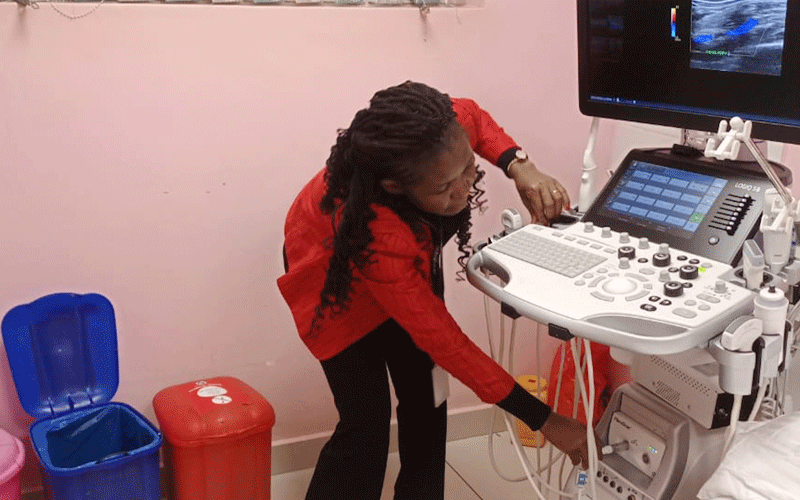Breaking the glass ceiling in biomedical engineering
By Christopher Owuor, November 30, 2020
For more than 10 years, Engineer Millicent Alooh has paced along the corridors of different hospitals in the country rendering her service to humanity.
She has earned recognition as biomedical engineer, hence putting emphasis on the fact that women too can rise to stardom in fields/careers that are considered a preserve for men.
As the current National Secretary General of the Association of Medical Engineering of Kenya (AMEK), her job, she admits, is not easy.
She has to work extremely hard and put in long hours just to ensure that services are not interrupted and patients receive the best medical care that they can and deserve.
Eng Alooh currently serves as the head of Maintenance and Biomedical Engineering at MP Shah Hospital where she joined in March last year.
She previously worked at Carewell Suppliers Enterprise Ltd where she began her career in 2008, also at Nairobi Women’s Hospital, Aga Khan Hospital Kisumu and Aga Khan Hospital Nairobi.
Eng Alooh’s job basically entails taking care of all the hospital equipment on a day-to-day basis.
Day-to-day work
“I check the functionality of all the equipment before they are used on patients. I also train the nurses and doctors on how to effectively use the machines.
I repair the units in the event of any breakdown and keep track of all the equipment movements in the hospital,” she says.
“Besides that, I also advise the hospital management on which equipment to purchase and which ones to remove from use so as to ensure the safety of patients and also the users of the equipment.

These are just to mention a few, but there is a lot of work which a biomed does in a hospital set up,” she adds.
Every day when she reports to work, Eng Alooh begins her day by checking her emails for any work, which may have been reported the previous night.
She proceeds to conduct ward rounds and attends to breakdowns of medical equipment.
She then does a planned preventive maintenance and training for the day if any, not forgetting other technical meetings, which she attends.
With the Coronavirus pandemic having struck the country since March, Eng Alooh says she has had to adapt to the new normal.
“As a biomed, my new normal focuses on equipment decontamination/disinfection pre and post use with highest priority on critical care equipment, liasing continuously with medical equipment suppliers and manufacturers on better disinfectants for various equipment such as dialysis machines, ventilators, monitors, ultrasound machines, electrocardiogram (ECG) machines, HI Flow units among others as I work hand in hand with infection control specialists in the hospital.
In addition to this, use of the right personal protective equipment (PPE) whenever I am doing my ward rounds and attending to any equipment is also a major focus, adherence to the government Covid-19 protocols and not forgetting the hospital’s Covid-19 protocols,” she says.
According to Aloo, while growing up in Suba in Homa Bay county, she had wanted to become a doctor, an accountant or an engineer. And the last choice came to pass.
A rare field
She recalls: “Biomedical Engineering was a rare field in those days hence when I saw an advert on the newspaper one day about the same; I quickly went on to apply for the course filled with the excitement of pursuing a unique career.
It is one of the most interesting courses to pursue and at the same time, tough. Being only three ladies in a class of 55 students at Egerton University was no mean feat.
The workshop projects, which involved physical metal cutting using a saw or going to repair mortuary fridges with decomposing bodies required one to be strong and tough.
I never had a social life back in college and university. The classes were so intense from Monday to Saturday.”
According to Eng Alooh, pursuing the course does come with a number of challenges including lack of equipment to carry out practice during training in school.
Like any other engineering course, it requires a lot of practical work for one to be competent.
Most colleges and universities cannot afford the equipment needed for training since it’s expensive.
Another challenge is lack of lecturers/ tutors in the field of biomedical engineering. The course requires highly trained individuals to impart knowledge on the students.
On the other hand, internship opportunities are also few yet with the emerging numbers of biomedical engineers, it’s difficult to get attached in a hospital or any other related organisation.
Striking balance
For Eng Alooh, the most rewarding part of her job is the new emerging technologies.
“It’s interesting to learn that new equipment is invented every day for different diagnosis and treatments,” she says.
However, the most challenging part of her job is the fact that there are times she has to keep an equipment out of use for lack of spare parts in the country.
“The process of importation and logistics in the country is too tedious and long, yet some of these equipment parts cost millions of shillings such that one can’t afford to stock them,” she explains.
The mother of two adheres to the principle of doing the right thing at the right place and at the right time with the right people and maintaining a proactive attitude.
“When I am at home, I carry out my normal duties of a mother and wife and while at work, I perform biomedical engineering duties.
It’s all about striking a balance and ensuring that you do not neglect or fail in any of your roles.
I do draw my strength from prayers and I believe that with God everything is possible,” she offers.
Eng Alooh advises women to pursue biomedical engineering as a career.
“Initially, we never had many women pursuing the course, but today the trend has improved,” says Alooh in conclusion.